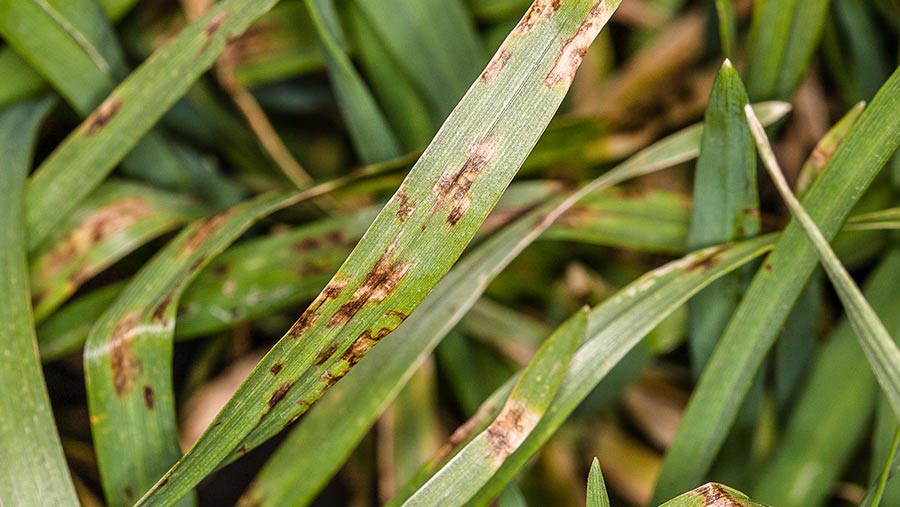Net blotch: Causes, symptoms and fungicide resistance advice
 © Blackthorn Arable
© Blackthorn Arable Net blotch is a disease that affects both winter and spring barley, causing yield losses of between 10% and 40%.
While it can arise from infected seed, this is a relatively unimportant form and the seed-borne phase does not usually reduce yield.
Where suspected, seed testing can be done, with seed treatments used to protect against seed-borne inoculum if necessary.
The main source of net blotch inoculum is infected stubble and volunteers, where the pathogen has overwintered, allowing airborne spores to be produced and spread in the wind or by rain splashing up the plant.
See also: Tips on getting high spring barley yields in a tough season
This trash-borne inoculum poses the biggest threat to yield and recent changes in SDHI fungicide performance against the disease should be noted, stress experts.
Given its lifecycle, wet and mild weather favours the disease, as do factors such as high seed rates, early drilling and min-till or no-till regimes.
Symptoms
Infection of young seedlings with net blotch can look very similar to leaf stripe infection, with brown stripes spreading from the base of leaves in seedlings and tillering plants.
Leaves infected by spores from crop debris or neighbouring plants look very different – on these, long brown lesions with a mottled or netted appearance develop. On close examination, these are seen to consist of a network of brown lines.
Further signs to look for include a yellowing of the leaf tissue surrounding the lesions, which may differ in size.
Another, less common, symptom is the appearance of small, oval-shaped lesions, which are often mistaken for ramularia.
Symptoms can often be found quite widely in winter crops, but the affected leaves then die back. New leaves, produced in the spring, may be symptom-free, with the disease then being found later in the year on upper leaves.
Varieties
Resistance ratings for net blotch are included in the AHDB Recommended List of winter barley varieties.
These ratings range from 4 to 7, with only one winter barley, Surge, having a 7. There are, however, a number of varieties to choose from with a 6 rating.
A resistant variety will reduce risk and may help growers to plan their spray programmes and prioritise the crops that need protecting. Used with other measures, such as trash removal and stubble cleanliness, the risk can be reduced
Control
There have been changes in fungicide performance against net blotch, confirms Stuart Knight, deputy director at Niab Tag, with both the SDHIs and the azoles being less effective than they used to be.
“We have seen further sensitivity shifts with the SDHIs,” he says. “The situation is not as bad as it is with ramularia, but there is a partial resistance issue and growers need to be aware of it when planning their fungicide programmes.”
Strobilurin resistance in net blotch was confirmed a few years ago, he adds.
The AHDB-funded fungicide dose response work showed that balanced mixtures are the solution to net blotch, as they also gave the highest yield response. The active ingredient prothioconazole gave the best control and the SDHIs and strobilurins continued to offer some activity.
Another mode of action, cyprodonil, is also active against net blotch. Current advice is to include it once in a programme, to maintain some diversity of active ingredients.
In winter barley, the biggest response comes from the T1 timing, while in spring barley both the T1 and the T2 timings are important.
Net blotch risk factors
- Mild and wet weather
- Disease sources – seed, trash, volunteers
- Second barley crops

